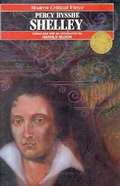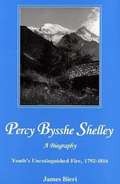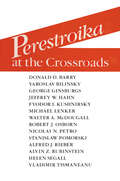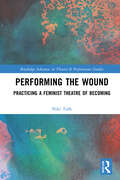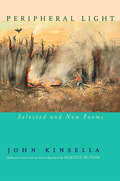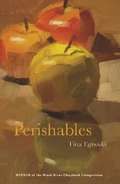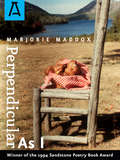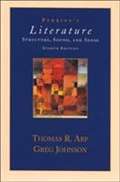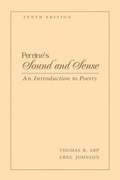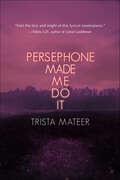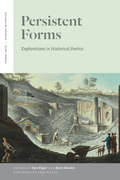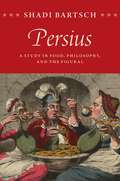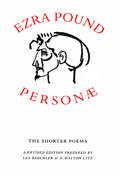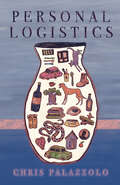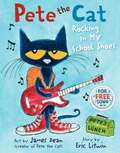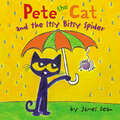- Table View
- List View
Perception, Class and Environment in the Works of Thomas Hardy
by Roger EbbatsonThis book examines Thomas Hardy’s writing in both prose and poetry, focusing on issues of perception, ‘being’, class and environment. It illustrates the ways in which Hardy represents a social world which serves as a ‘horizon’ for the individual and explores the dialectic between the perceptible world and human consciousness. Ebbatson demonstrates how, in Hardy’s oeuvre, modern life becomes alienated from its roots in rural life – individual freedom is achieved in works like Tess of the d'Urbervilles, Jude the Obscure or The Woodlanders at the cost of personal insecurity and a deepening sense of homelessness. However, this development occurs against the marginalisation of dialect forms of speech. This book also explores how Hardy’s impressionist vision serves to undermine the prevailing conventions of plot structure.
Percy Bysshe Shelley (Modern Critical Views)
by Harold Bloom-- Brings together the best criticism on the most widely read poets, novelists, and playwrights<BR>-- Presents complex critical portraits of the most influential writers in the English-speaking world -- from the English medievalists to contemporary writers
Percy Bysshe Shelley: Youth's Unextinguished Fire, 1792-1816
by James BieriHaving retired from teaching psychology in US universities, Beiri presents a biography of British Romantic poet Shelley (1792-1822), ending with the summer in Switzerland of which so much has been said and imagined. He says the poet compressed into less than three decades a rich legacy of poetry, prose, and correspondence; and though he did not know the work of his contemporary William Blake, the two shared a psychological understanding of humanity that anticipated the age of Freud.
Pere Gimferrer
by Pere GimferrerA bilingual edition of poems by the award-winning Spanish poet.Pere Gimferrer has been writing poetry for more than fifty years in several languages, restoring and expanding upon avant-garde tendencies in poetry that had been abandoned in Spain after the Spanish Civil War. Of his second book, The Sea Aflame, Octavio Paz wrote: &“Our language will be, already is, larger by one poet.&” In 1970, with Mirrors, Gimferrer turned to Catalan, his mother tongue. Since then, he has won major Catalan and Spanish prizes for his work, which, along with poetry, includes writings on film and art history, translations, and novels. This bilingual volume, the first to draw on all phases of Gimferrer&’s career as a poet—from Message from the Tetrarch, published when he was eighteen, to selections from his recent verses in Italian—is an ideal introduction to a writer who, in the words of Roberto Bolaño, &“is a great poet and also knows everything.&”
Perestroika at the Crossroads
by Alfred J. Rieber Alvin Z. RubinsteinThe contributors to this volume have undertaken an assessment of the Soviet Union as it enters the last decade of the 20th century. Organized to cover each major area of policy initiative (or response), the collection surveys the Gorbachev reform agenda and its successes and failures to date in various fields, including culture, economics, ideology, law, politics, federalism and the nationality problem, and foreign policy vis-a-vis the West, Eastern Europe and the Third World.
Performance in the Texts of Mallarmé: The Passage from Art to Ritual
by Mary Lewis ShawPerformance in the Texts of Mallarmé offers a new theory of performance in the poetic and critical texts of Stephane Mallarmé, a theory challenging the prevailing interpretation of his work as epitomizing literary purism and art for art's sake.Following an analytical presentation of the concepts of ritual and performance generally applied, Mary Shaw shows that Mallarmé perceived music, dance, and theater as ideal languages of the body and therefore as ideal forms of ritual through which to supplement and celebrate poetic texts. She focuses on previously unexplored references to supplementary, extratextual performances in four of Mallarmé's major poetic texts—Herodiade, L'après-midi d'un faune, Igitur, and Un coup de des—revealing the consistent formal expression of his original conception of literature's relationship to the performing arts.Shaw then discusses Mallarmé's monumental project, Le Livre, a metaphysical book designed to be performed in a series of ritual celebrations. She analyzes and describes the intrinsic structure and contents of this unfinished work as the fullest realization of the text-performance relationship elaborated throughout Mallarmé's corpus. Shaw offers Le Livre as a prototype of avant-garde performance, drawing important parallels between Mallarmé's literary experimentation and crucial developments in twentieth-century arts.
Performing the Wound: Practicing a Feminist Theatre of Becoming (Routledge Advances in Theatre & Performance Studies)
by Niki TulkThis book offers a matrixial, feminist-centered analysis of trauma and performance, through examining the work of three artists: Ann Hamilton, Renée Green, and Cecilia Vicuña. Each artist engages in a multi-media, or “combination” performance practice; this includes the use of site, embodied performance, material elements, film, and writing. Each case study involves traumatic content, including the legacy of slavery, child sexual abuse and environmental degradation; each artist constructs an aesthetic milieu that invites rather than immerses—this allows an audience to have agency, as well as multiple pathways into their engagement with the art. The author Niki Tulk suggests that these works facilitate an audience-performance relationship based on the concept of ethical witnessing/wit(h)nessing, in which viewers are not positioned as voyeurs, nor made to risk re-traumatization by being forced to view traumatic events re-played on stage. This approach also allows agency to the art itself, in that an ethical space is created where the art is not objectified or looked at—but joined with. Foundational to this investigation are the writings of Bracha L. Ettinger, Jill Bennett and Diana Taylor—particularly Ettinger’s concepts of the matrixial, carriance and border-linking. These artists and scholars present a capacity to expand and articulate answers to questions regarding how to make performance that remains compelling and truthful to the trauma experience, but not re-traumatizing. This study will be of great interest to students and scholars of performance studies, art history, visual arts, feminist studies, theatre, film, performance art, postcolonialism, rhetoric and writing.
Peripheral Light: Selected and New Poems
by Harold Bloom John Kinsella"We are poised before...what I prophesy will be a major art."—Harold Bloom "One of Australia's most vivid, energetic and stormy poets, a writer who turns to the natural world with a fierce light."—Edward Hirsch, Washington Post Highly Recommended Poetry Books of 2003
Perishables
by Tina EgnoskiPerishables opens with a sister sitting calmly on a burning chair then moves out of the childhood home that seems so fragile that it might split along the equator like a rotten piece of stone fruit. It is a reckoning of those things, outside and in, that we must Handle With Care.
Perrine's Literature: Structure, Sound, and Sense (8th edition)
by Greg Johnson Thomas R. ArpThis eighth edition of classic text continues to provide students with a comprehensive study into the principal forms of fiction, poetry, and drama.
Perrine's Sound and Sense: An Introduction to Poetry (10th edition)
by Greg Johnson Thomas R. ArpThis tenth edition of Perrine's Sound and Sense, like the previous editions, addresses the student who is beginning a serious investigation of poetry. The authors of this new edition seek to give that student a sufficient grasp of the nature and variety of poetry, some reasonable means for reading it with appreciative understanding, and a few primary ideas of how to evaluate it.
Perrine's Sound and Sense: An Introduction to Poetry (12th Edition)
by Greg Johnson Thomas R. ArpThe book works to balance the classic with the contemporary, to represent a wide diversity of poets, and to emphasize the importance of the close reading of poetry as the avenue to enjoy and appreciate it. Although there are many flourishing approaches to poetry and its effects, we believe that the initial step must be understanding the elements of poetry through which it presents itself. This book is addressed to the student who is beginning a serious investigation of poetry. We have attempted to offer that student a sufficient grasp of the nature and variety of poetry, some reasonable means for reading it with appreciative understanding, and a few primary ideas of how to evaluate it. One important principle established in the earliest editions is the need for conciseness and compactness, so that the book will have a friendly, welcoming appeal and will not seem daunting in its comprehensiveness. In matters of theory, in an introductory textbook some issues are undoubtedly simplified, but none we hope seriously so, and some more sophisticated theoretical approaches have had to be excluded in the interests of space. Another principle is that the elements of poetry are presented in a progression in which each new topic builds on what preceded it. The separate chapters gradually introduce the student to the elements of poetry, putting the emphasis always on how and why: How can the reader use these elements to get at the meaning of the poem, to interpret it sensibly, and to respond to it adequately? Why does the poet use these elements? What values have they for the poet and reader?
Persephone Made Me Do It (Myth and Magick #3)
by Trista MateerBestselling and Goodreads Choice Award-winning author Trista Mateer returns with another mythical approach to self-care in her newest poetry collection, Persephone Made Me Do It. Following her previous work in this series, Mateer weaves together mythology, tarot, poetry, and conversation to reveal a new side of a very old story. Alternating between the perspectives of poet and goddess, Persephoneís lore is explored, related to modern issues, and ultimately reclaimed.ìYou want to talk about duality? You want to talk about love? Let us speak instead of chaos.î In this new collection of art and feminist verse from Trista Mateer, Persephone might have flowers in her hairóbut she is out for blood. This is the third book in the Myth & Magick series, which also includes Aphrodite Made Me Do It and Artemis Made Me Do It.
Persian Literary Devices: Eight Essays
by Azadeh VatanpourThis volume offers a glimpse into the rich tradition of literary devices in Persian language and literature. It establishes an incontrovertible connection between literary devices - figurative language, rhetoric, and so on - and pedagogy and poetics in both written and oral expression. The essays offer a detailed and thorough overview of some of these literary devices and their dynamics, which have helped make the Persian literary tradition a force to reckon with. The essays also carve out a space dedicated to colloquialisms and idioms, as they are interwoven into the fabric of Persian culture— within the larger field of rhetoric. These devices are fostered and furthered in their potency, both culturally and linguistically, by the poets, writers, and rhetoricians who utilize them. The essays highlight a culture and history in texts and oral history that further speak to a culturally tailored complexity as per figurative language, idioms, colloquialisms, and therhetoric they help found and/or re-define. These discussions and analyses further facilitate an understanding of the epistemological and cultural meaning of some of the constituents of what is otherwise a Persian identity. This work is a must-have for scholars and students of Persian, Arabic, Ottoman, and Urdu literature, not to mention Middle Eastern history and cultural poetics enthusiasts.
Persistent Forms: Explorations in Historical Poetics (Verbal Arts: Studies in Poetics)
by Ilya Kliger and Boris MaslovSince the mid-1980s, attempts to think history and literature together have produced much exciting work in the humanities. Indeed, some form of historicism can be said to inform most of the current scholarship in literary studies, including work in poetics, yet much of this scholarship remains undertheorized.Envisioning a revitalized and more expansive historicism, this volume builds on the tradition of Historical Poetics, pioneered by Alexander Veselovsky (1838–1906) and developed in various fruitful directions by the Russian Formalists, Mikhail Bakhtin, and Olga Freidenberg. The volume includes previously untranslated texts of some of the major scholars in this critical tradition, as well as original contributions which place that tradition in dialogue with other thinkers who have approached literature in a globally comparatist and evolutionary-historical spirit. The contributors seek to challenge and complement a historicism that stresses proximate sociopolitical contexts through an engagement with the longue durée of literary forms and institutions. In particular, Historical Poetics aims to uncover deep-historical stratifications and asynchronicities, in which formal solutions may display elective affinities with other, chronologically distant solutions to analogous social and political problems.By recovering the traditional nexus of philology and history, Persistent Forms seeks to reinvigorate poetics as a theoretical discipline that would respond to such critical and intellectual developments as Marxism, New Historicism, the study of world literature, practices of distant reading, and a renewed attention to ritual, oral poetics, and genre.
Persius: A Study in Food, Philosophy, and the Figural
by Shadi BartschThe Roman poet and satirist Persius (34–62 CE) was unique among his peers for lampooning literary and social conventions from a distinctly Stoic point of view. A curious amalgam of mocking wit and philosophy, his Satires are rife with violent metaphors and unpleasant imagery and show little concern for the reader’s enjoyment or understanding. In Persius, Shadi Bartsch explores this Stoic framework and argues that Persius sets his own bizarre metaphors of food, digestion, and sexuality against more appealing imagery to show that the latter—and the poetry containing it—harms rather than helps its audience. Ultimately, he encourages us to abandon metaphor altogether in favor of the non-emotive abstract truths of Stoic philosophy, to live in a world where neither alluring poetry, nor rich food, nor sexual charm play a role in philosophical teaching.
Personae: The Shorter Poems (Revised Edition)
by Ezra Pound A. Walton Litz Lea BaechlerA new edition of Pound's groundbreaking shorter poems. If the invention of literary modernism is usually attributed to James Joyce, T. S. Eliot and Ezra Pound, it was Pound alone who provided (in Hugh Kenner's words) "the synergetic presence") to convert individual experiment into an international movement. In 1926 Pound carefully sculpted his body of shorter poems into a definitive collection which would best show the concentration of force, the economy of means, and the habit of analysis that were, to him, the hallmarks of the new style.This collection, where Pound presented himself in a variety of characters or "masks," was called Personae. In 1926, Personae's publication gave solidity to a movement today the work stands as one of the classic texts of the twentieth century. Pound scholars Lea Baechler (of Columbia) and A. Walton Litz (Holmes Professor of English Literature at Princeton) have prepared a corrected text and supplied an informative "Note on the Text" explaining both Pound's original criteria for his selection and the volume's subsequent history.
Personae: The Shorter Poems of Ezra Pound
by Ezra Pound A. Walton Litz Lea BaechlerIf the invention of literary modernism is usually attributed to James Joyce, T. S. Eliot and Ezra Pound, it was Pound alone who provided (in Hugh Kenner's words) "the synergetic presence") to convert individual experiment into an international movement. In 1926 Pound carefully sculpted his body of shorter poems into a definitive collection which would best show the concentration of force, the economy of means, and the habit of analysis that were, to him, the hallmarks of the new style. This collection, where Pound presented himself in a variety of characters or "masks," was called Personae. In 1926, Personae's publication gave solidity to a movement today the work stands as one of the classic texts of the twentieth century. Pound scholars Lea Baechler (of Columbia) and A. Walton Litz (Holmes Professor of English Literature at Princeton) have prepared a corrected text and supplied an informative "Note on the Text" explaining both Pound's original criteria for his selection and the volume's subsequent history.
Personal Logistics
by Chris PalazzoloPersonal Logistics is a collection about men and industry, about enterprise and survival, and about the insignificance of the individual in place and time. The collection details the poet' s experiences and observations of life in the East Kimberley, as someone who has worked as a farmhand and as a stay-at home dad. Coursing through the collection, in both the wet season and the dry, is the theme of the relation between naturally flowing water and hydroelectricity, without which Kununurra, where the poet resides, would be considerably less hospitable.
Personals
by Ian WilliamsThese are not love poems. These are almost-love poems. Jittery, plaintive, and fresh, these are poems voiced through a startling variety of speakers who continually rev themselves up to the challenge of connecting with others, often to no avail. Ian Williams writes in traditional poetic forms: ghazals, a pantoum, blank sonnets, mock-heroic couplets. He also invents his own: poems that spin into indeterminacy, poems that don’t end. With a deft hand and playful ear, Williams entices the reader to stumble alongside his characters as they search, again and again, for intimacy, for love, and for each other.
Peru
by Herbert MorrisThis book is a collection of poems by the author that appeared in various journals and on various topics.
Pete the Cat Rocking in My School Shoes: A Back To School Book For Kids (Pete The Cat Ser.)
by Eric LitwinPete the cat wears his school shoes while visiting the library, the lunchroom, the playground, and more while singing his special song.
Pete the Cat and the Itsy Bitsy Spider (Pete the Cat)
by Kimberly Dean James DeanPete the Cat’s cool adaptation of the classic children’s song "Itsy Bitsy Spider" will have have young readers laughing and singing along.The itsy bitsy spider climbed up the water spout. Down came the rain....As the itsy bitsy spider struggles, Pete and his friends know just what to do to help out!Fans of James Dean's #1 New York Times bestselling Pete the Cat will love rocking out with Pete.


